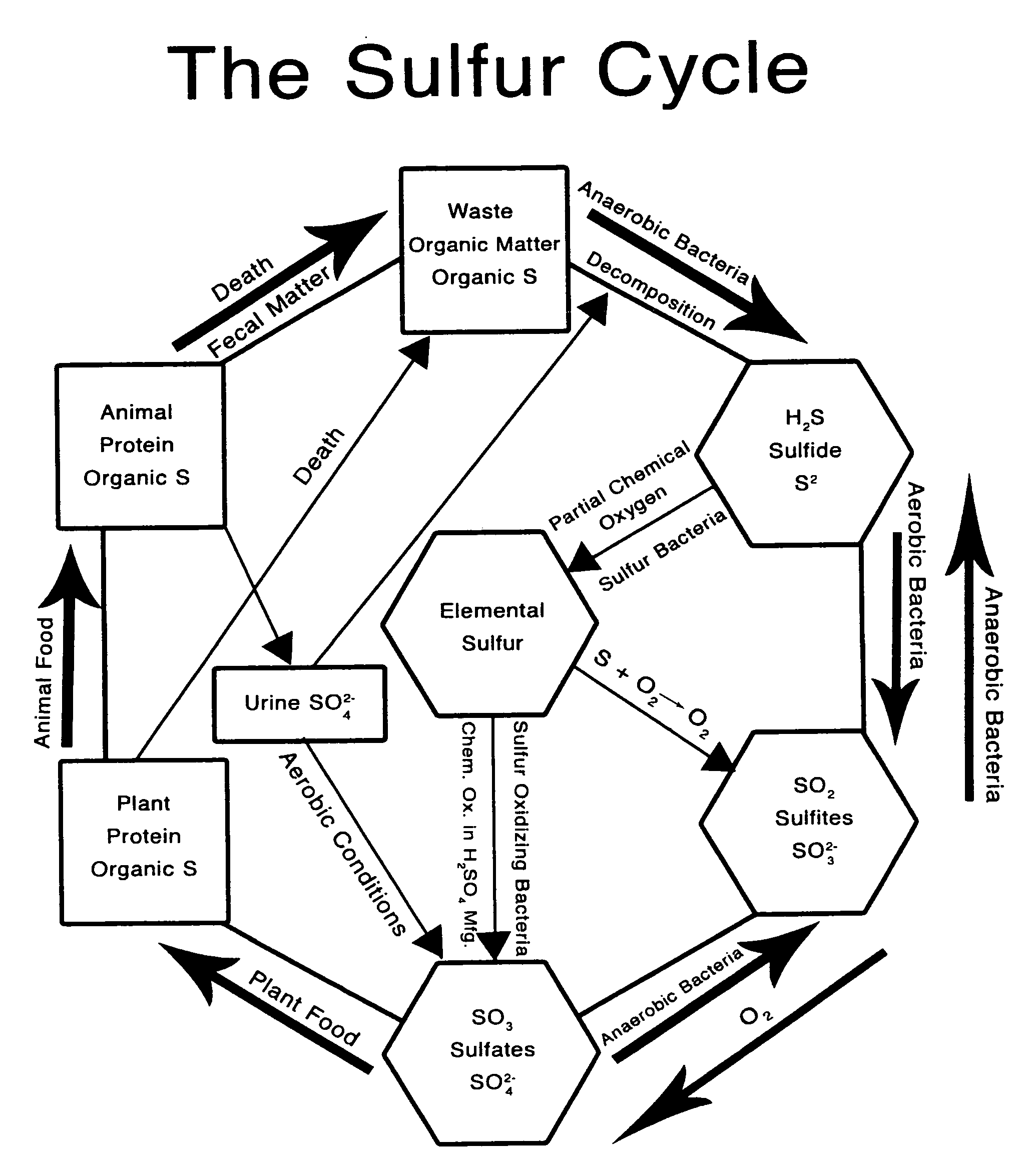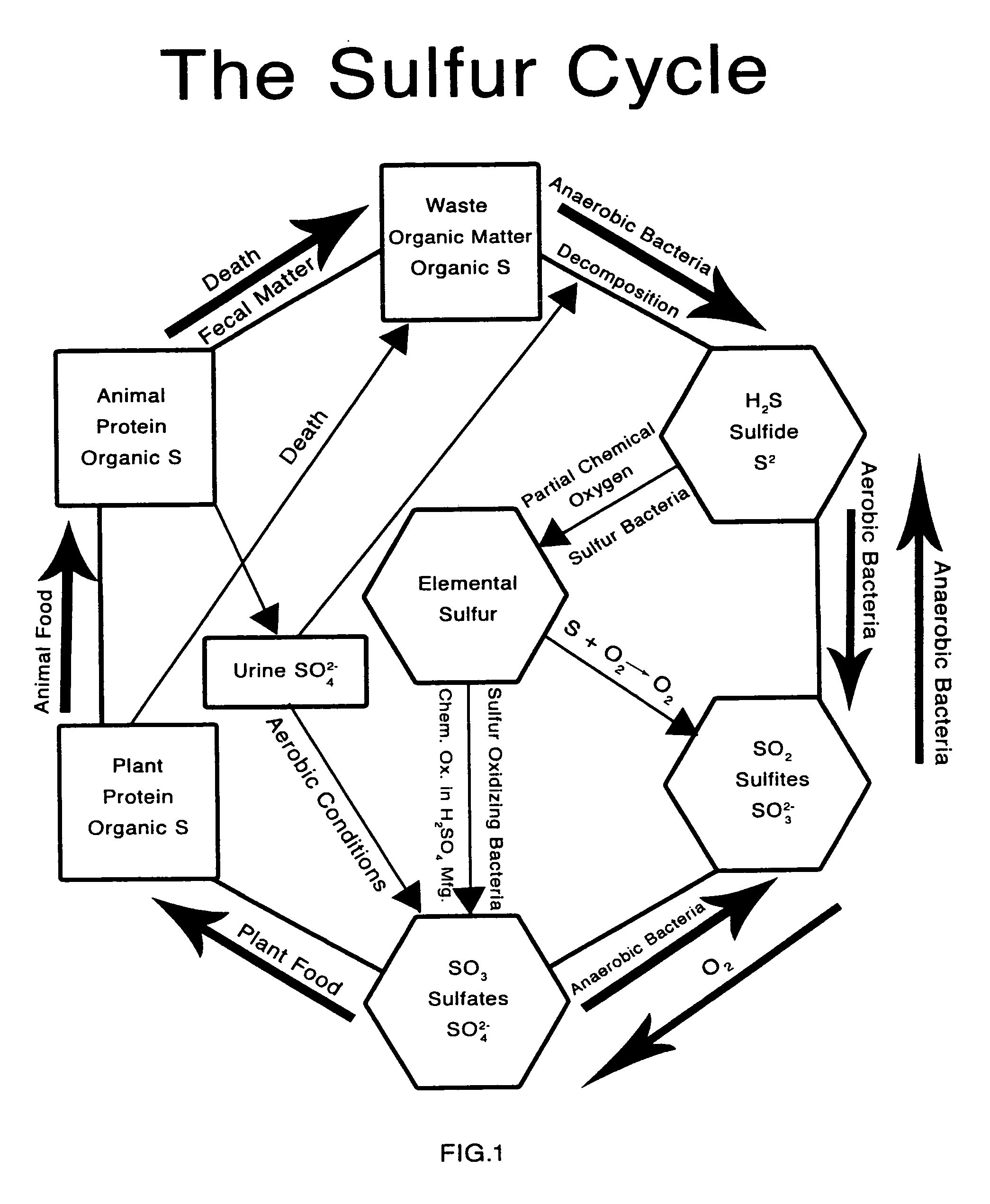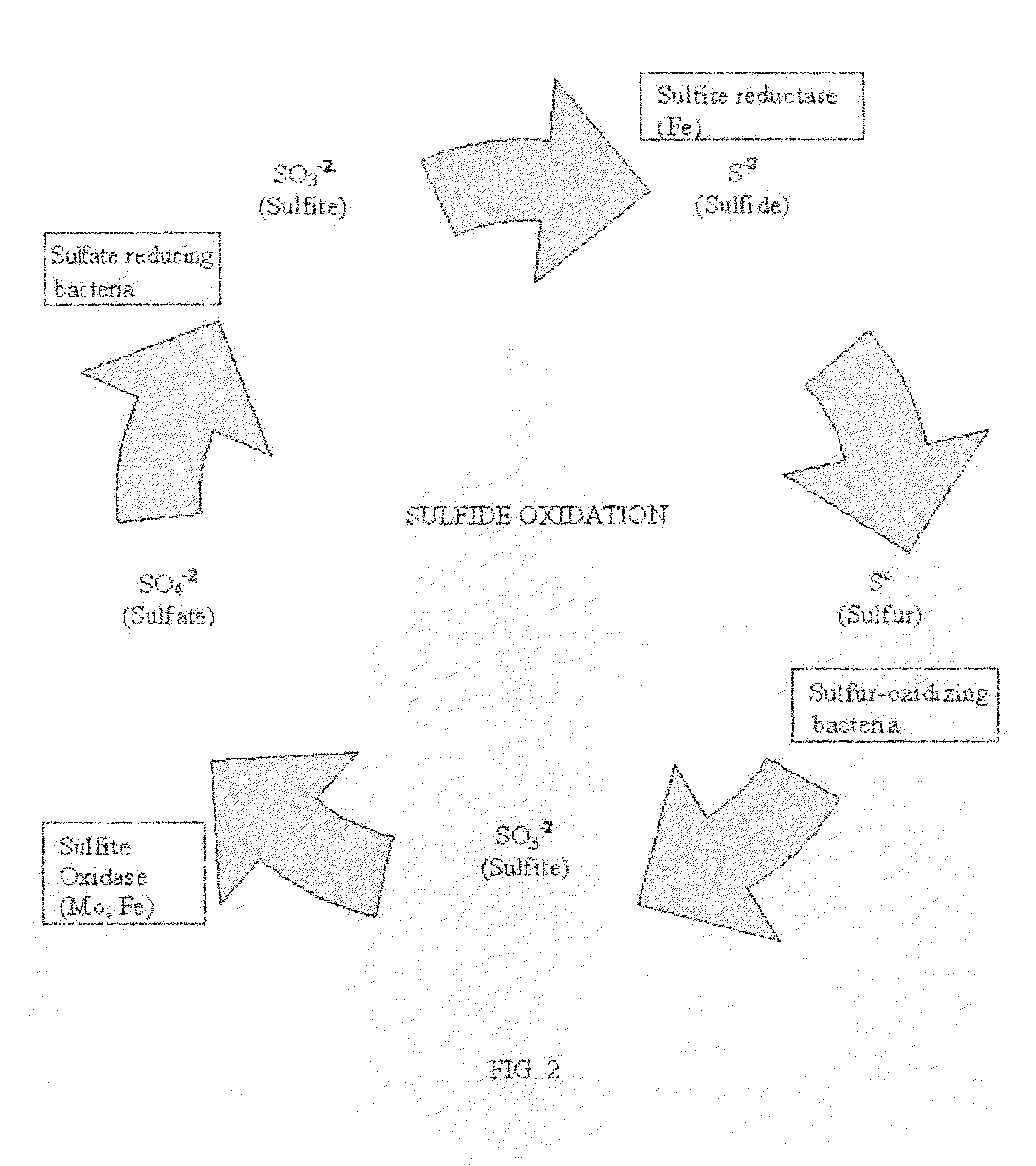Carbon sequestration method
a carbon sequestration and carbon dioxide technology, applied in the field of carbon sequestration, can solve the problems of limited other nutrient cycles, achieve the effects of improving plant nutrition, improving soil water holding capacity, and effectively ameliorating the symptoms of dryland salinity
- Summary
- Abstract
- Description
- Claims
- Application Information
AI Technical Summary
Benefits of technology
Problems solved by technology
Method used
Image
Examples
Embodiment Construction
[0077]FIG. 1 is a diagram of the sulfur cycle produced by Kenneth J. Edwards, Jr., vice president of the Alken-Murray Corporation showing how aerobic and anaerobic bacteria assimilate sulfates, sulfites, sulfur, and sulfides.
[0078]FIG. 2 is a diagram of the sulfide oxidation cycle taken from the article entitled, “Sulfur Oxidation, Biogeochemical Cycles, Soil Microbiology, explaining how sulfides are oxidized, http: / / filebox.vt.edu / users / chagedor / boil—4684 / Cycles / Soxidat.html.
[0079]FIG. 3 is an illustration of a typical pH titration curve of carbonic acid with sulfurous acid. It was generated by the CurtiPlot® 1992-2008 computer model program developed by Professor Gebhardt Rolf Gutz of Universidane de Sao Paulo. 20 ml. of 0.0r mol / L of Titrant Carbonic Acid having an initial pH of 1.806 was titrated with 0.1 mol / L of Titrant sulfurous acid and the pH computer simulated as shown in FIG. 4.
[0080]These computer generated titration curves provide a good approximation as to the amount o...
PUM
 Login to View More
Login to View More Abstract
Description
Claims
Application Information
 Login to View More
Login to View More - R&D
- Intellectual Property
- Life Sciences
- Materials
- Tech Scout
- Unparalleled Data Quality
- Higher Quality Content
- 60% Fewer Hallucinations
Browse by: Latest US Patents, China's latest patents, Technical Efficacy Thesaurus, Application Domain, Technology Topic, Popular Technical Reports.
© 2025 PatSnap. All rights reserved.Legal|Privacy policy|Modern Slavery Act Transparency Statement|Sitemap|About US| Contact US: help@patsnap.com



